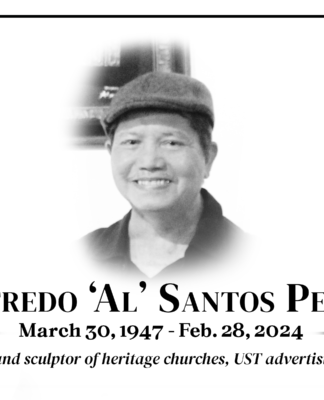REKINDLING the faith, carrying his cross, and bringing light unto the Christian path for the faithful to follow. These accomplishments paved the way for Padre Pio de Pietrelcina to be included in the roster of Catholic saints. He was solemnly canonized by Pope John Paul II last June 16, 2002.
Padre Pio was born Francesco Forgione on May 25, 1887 at Pietrelcina in the Archdiocese of Benevento, southern Italy. He was the only child of Grazio Forgione and Maria Giuseppa De Nunzio.
He received the Sacrament of Confirmation and made his first Holy Communion when he was twelve years old.
Inspired by the works of Saint Francis of Assisi, he entered the novitiate of the Capuchin Friars at Morcone on January 6, 1903 at the age of 15. He donned the Franciscan habit on January 22, 1903 and took the name Brother Pio in honor of Saint Pius V, the town’s patron saint.
After a year, he made he made the solemn profession of the vows of poverty, chastity, and obedience. He was ordained to the priesthood on August 10, 1910.
On September 20, 1918, he acquired the stigmata, the five wounds of Jesus while nailed on the cross. He was the first stigmatized priest in Church history.
Saintly life
Padre Pio was regarded as a saint even before his canonization. His monastery in southern Italy receives more than seven million devotees a year.
Committing himself to serve the people, he lived up to his mission of loving God and helping others to love Him. He welcomed people to his ministry for more than 50 years, giving them spiritual guidance and counseling.
The sacrament of reconciliation and the celebration of the Holy Eucharist highlighted his vocation. Always immersed in prayer, he recited the rosary 35 times a day. On his deathbed, he continued to utter the names “Jesus” and “Mary” before he breathed his last.
Padre Pio is considered by some Catholic faithful as a wounded healer. Despite unjust accusations in his priestly life, he remained silent and endured the pain. He experienced at some point in his life spiritual dryness. Yet, he never faltered in spreading the faith to the people.
From 1911 to 1916, he was exempted from his work in the ministry due to his deteriorating health. He stayed at the priory of San Giovanni Rotondo in Italy and remained there until his death. He died on September 23, 1968 at the age of 81.
After his death, the Capuchin Order wasted no time in starting the beatification and canonization process on March 20, 1983. Pope John Paul II declared him as Blessed Pio of Pietrelcina on March 2, 1999. This event gathered the largest crowd ever assembled at St. Peter’s Square.
Apparitions and miracles
When Padre Pio was 31 years old, he saw a mysterious person whose hands, feet, and side were dripping with blood. It is said that he acquired the stigmata while in this visionary trance.
“The sight terrified me and what I felt at that moment is indescribable. I thought I should die and really should have died if the Lord had not intervened and strengthened my heart, which was about to burst out of my chest. The vision disappeared and I became aware that my hands, feet, and side were dripping with blood. Imagine the agony I experienced and continue to experience almost every day. The heart wound bleeds continually, especially from Thursday evening until Saturday,” Padre Pio later wrote.
Padre Pio prayed for God to heal his wounds but he did not ask God to spare him from the pain because he believed that the wounds provided him the strength to fend off attacks by the devil.
His wounds stayed with him for more than 50 years, but miraculously they disappeared before his death.
His followers started witnessing miracles during his last few years. Whenever he was around, the room would smell of roses. He also possessed the gift of bilocation, which is the ability to appear two places at the same time. He was able to miraculously heal terminal ailments. In 1991, a woman recovered from a lymph vessel ailment after praying for Padre Pio’s intercesson.
Padre Pio may be regarded as one of the most spectacular saints of the Church for his stigmata but the faithful should be reminded that saints do not exist as superhuman figures but as models of sanctity and holiness.
“The life of Padre Pio should remind us that there is more to life than what is being true to us now. Nowadays, nawawala na iyong reflection on the totality that would lead us to the true essence of our existence. Saints do not look at the peculiarities of everyday but rather on how they gear their acts on the totality of the fullness of man, “ Brother Allan Basas, O.P., an MA Theology freshman at the Ecclesiastical Faculty of Theology, said.
Fr. Ermito de Sagon, O.P., Institute of Physical Education and Athletics director, said that even though Padre Pio lived in a different milieu, he remains relevant today as a model of holiness. “We need models to provide us the right direction in our Christian life,” he added.












